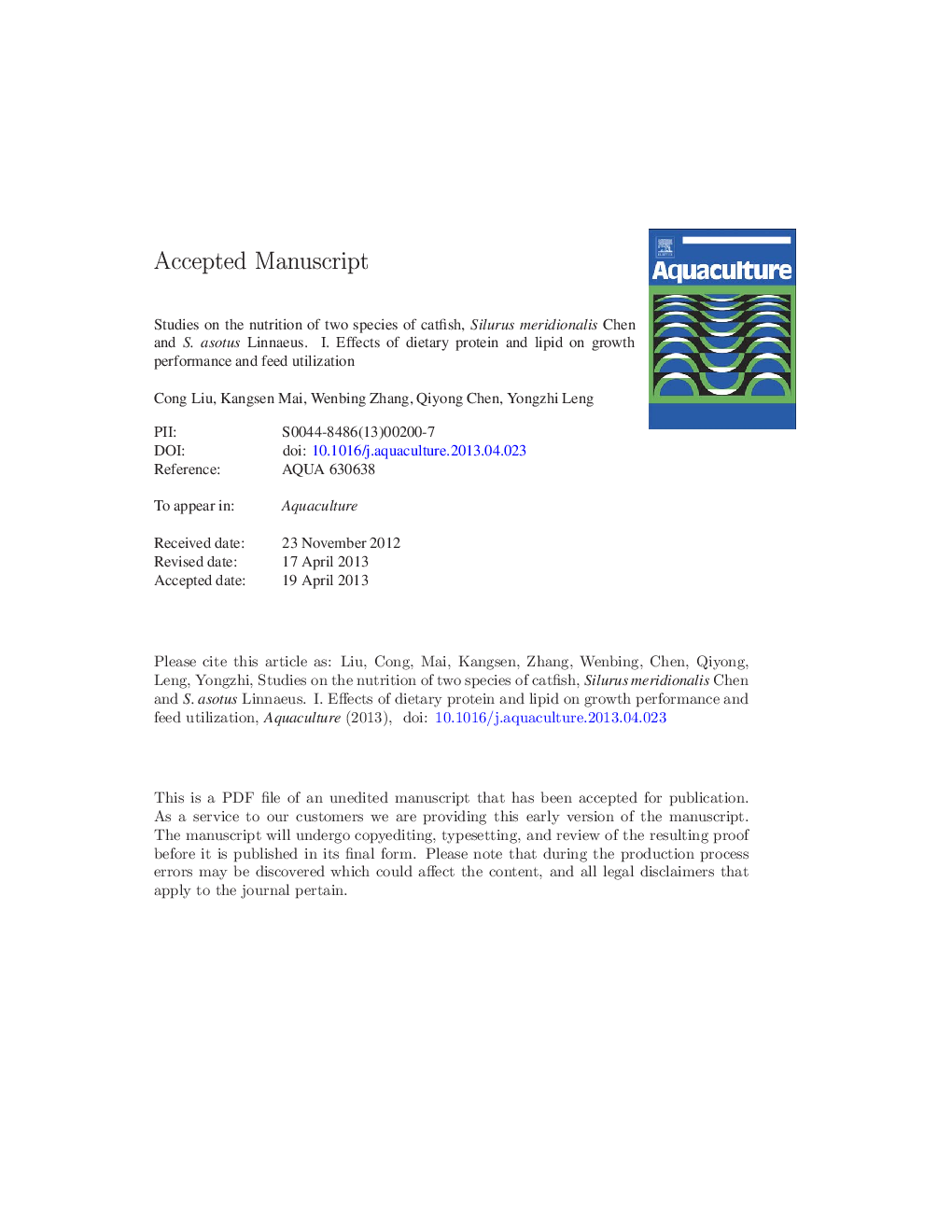| Article ID | Journal | Published Year | Pages | File Type |
|---|---|---|---|---|
| 8495622 | Aquaculture | 2013 | 25 Pages |
Abstract
A 4 Ã 3 two-factor experiment was designed to study the effects of dietary protein and lipid on growth performances and feed utilization of two species of juvenile catfish, Silurus meridionalis Chen and S. asotus Linnaeus, with the initial weight 9.16 ± 0.01 g and 9.10 ± 0.01 g, respectively. Twelve extruded pellet diets were formulated to contain four levels of protein (46%, 43%, 40% and 37%) and three levels of lipid (13%, 10% and 7%). Each diet was fed to a triplicate group of catfish for 8 weeks in a flow-through water system. The results showed that dietary protein had significant effects on the weight gain rate (WGR) of S. meridionalis Chen, and the feed intake (FI), feed efficiency ratio (FER) and protein efficiency ratio (PER) of both catfish (P < 0.05). The highest WGR of S. meridionalis Chen was found as 1193.10 % in the group with 46% of dietary protein and 7% of dietary lipid. And that for S. asotus Linnaeu was found as 939.98 % with 43% of dietary protein and 7% of dietary lipid. The FI of both catfish decreased with the increasing of dietary protein level. The FER of both catfish were positively related with dietary protein level (S. meridionalis Chen, r = 0.820, p = 0.000; S. asotus Linnaeus, r = 0.630, p = 0.000), but negatively related with FI (S. meridionalis Chen, r = â 0.947, p = 0.000; S. asotus Linnaeus, r = â 0.927, p = 0.000). The PER of both catfish were significantly affected by dietary protein (P < 0.05), and were relatively lower in 46% of dietary protein groups. There were no significant differences in condition factor and hepatosomatic index among the all treatments in both catfish. Viscerasomatic indices of both catfish were increased with dietary lipid levels. In conclusion, the optimal ratio of dietary protein to lipid for S. meridionalis Chen and S. asotus Linnaeu was 43: 10 and 43: 7, respectively. Furthermore, S. meridionalis Chen got relatively higher growth, feed utilization and better body morphological indices than S. asotus Linnaeu under the present experimental conditions.
Related Topics
Life Sciences
Agricultural and Biological Sciences
Aquatic Science
Authors
Cong Liu, Kangsen Mai, Wenbing Zhang, Qiyong Chen, Yongzhi Leng,
